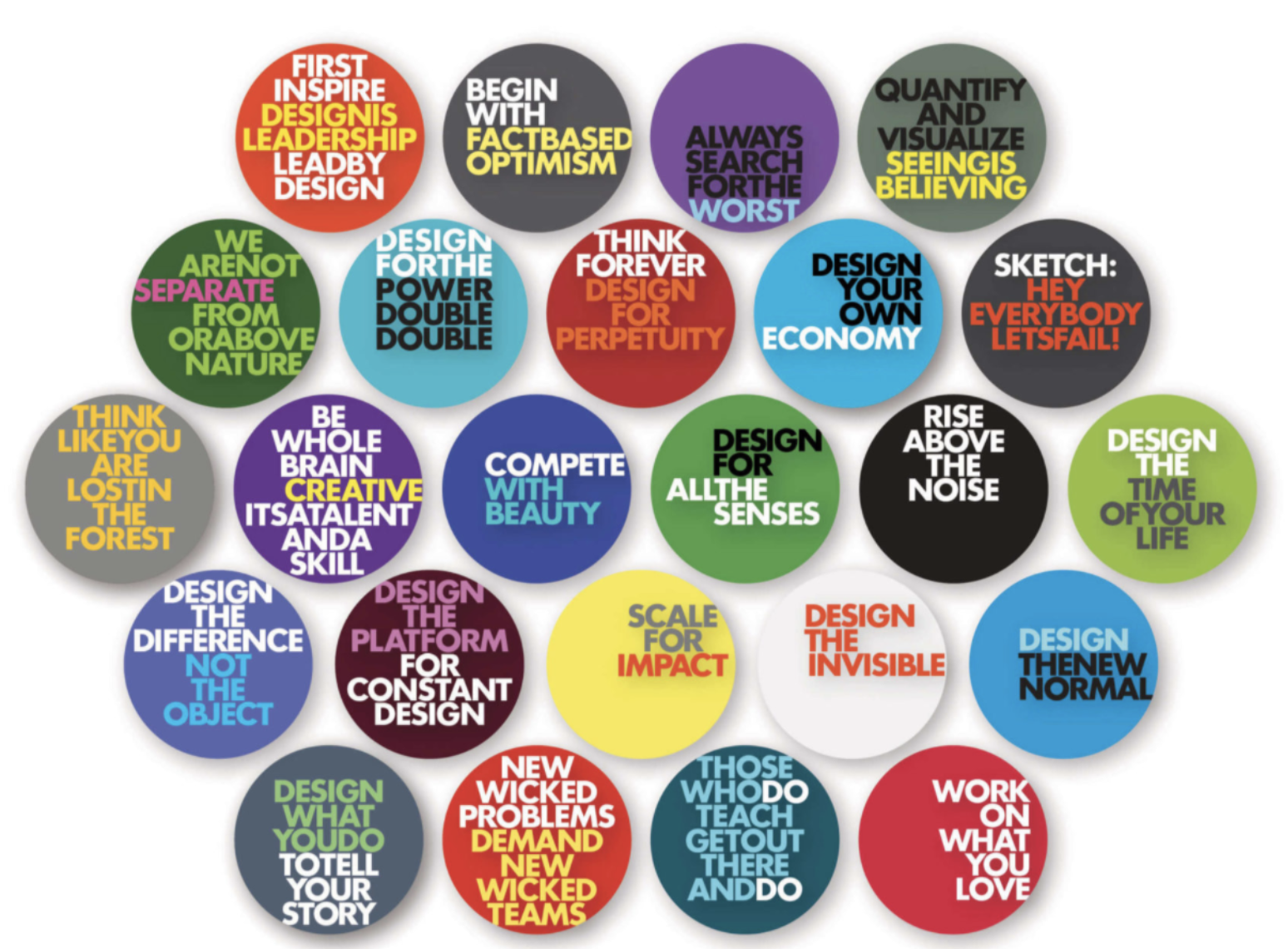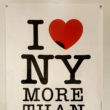In his 2017 bestselling novel American War, Egyptian-Canadian journalist and first-time novelist Omar El Akkad imagines a near future in which America has been torn apart by climate change, two civil wars, and a decade-long plague. North Africa and the Arab world have merged into a new superpower called the Bouazizi Empire, with its capital in Cairo. The intense heat of climate change has forced Cairo and other Middle Eastern cities to move underground. The Bouazizi Empire has become the largest producer of solar energy in the world, which it now dominates, along with China.
Now bring yourself back to the real world of the early 2000s. The royal family of Saudi Arabia, flanked by their engineers and scientists, are listening to a presentation by renowned Canadian designer Bruce Mau. They have hired him and his company to answer two questions: What happens to this country when it runs out of oil, and what does a sustainable city of post-oil innovation and research look like in Saudi Arabia?
In the course of their research, Mau and his team discovered that if you just put up a canopy in the desert heat, you can get to within 20 degrees of comfort—something desert nomads have been doing for centuries. So they proposed a radically different approach to city building: put cities under canopies, eliminating the need to construct conventional building exteriors because the canopies would provide a significant amount of protection from the elements. Mau’s team then calculated that there were 25 individual technological breakthroughs necessary to make this idea succeed. They proposed to organize 25 individual research and development projects. At the end of that process, the Saudis would own the IP.
If El Akkad’s imagined future for the Middle East seems implausible, don’t tell the Saudis that. They are already thinking about it. And while they may not be dreaming of world domination, they are clearly prepared to contemplate the end of oil. The question is, why would they hire Bruce Mau to help them imagine what that might look like?
Bruce Mau began his career as a graphic designer. While graphic design continues to be an important part of his practice, he was never happy to remain within the narrow confines of a fee-for-service business mostly focused on the visual design of corporate and consumer communications. In a 1994 interview for the British journal of graphic design Eye, Mau expressed his dissatisfaction with the constraints of mainstream design, noting, “The designer leads a kind of karaoke existence, always singing someone else’s song and never saying what he thinks should be said. I am trying to roll (my practice) onto the field where content is developed.”
His pursuit of designer-as-author status found its first flowering in what remains one of the most ambitious design publishing projects of the 20th century, the 1995 sensation S,M,L,XL. Co-authored with Dutch architect Rem Koolhaas, it was originally conceived as a monograph of the architect’s work, but it quickly morphed into a 1,376-page monolith, as much a declaration of Mau’s creative imagination as it was of Koolhaas’s architectural philosophy. This mammoth volume reads like a series of short cinematic explorations of its subject or, as is breathlessly proclaimed on its back cover, a collection of “essays, manifestoes, diaries, fairy tales, travelogues,” and an “accumulation of words and images [that] illuminates the conditions of architecture today—its splendors and miseries—exploring and revealing the corrosive impact of politics, context, the economy, globalization—the world.” It completely sold out its first printing of 30,000 copies, a feat it then dwarfed by selling out its second printing of 70,000 copies.
While its illumination of contemporary architecture is debatable, S,M,L,XL decisively and dramatically launched Bruce Mau onto the world stage, elevating his profile among designers, architects, artists, academics, and urban intellectuals everywhere. Weighing in at a hefty six pounds, it was also an unapologetic celebration of print at a time when the internet was beginning to supplant it as the dominant channel of communication. In terms of its sheer size, S,M,L,XL then became the template for a succession of similarly scaled book projects, starting with the 638-page Lifestyle in 2000, followed by 2004’s Massive Change and its companion traveling exhibit and, most recently, in the form of yet another giant book, the 512-page MAU MC24, subtitled Bruce Mau’s 24 Principles for Designing Massive Change in Your Life and Work, released in the summer of 2020 by Phaidon.
Like Marshall McLuhan and Buckminster Fuller, each of whose books reads like a variation of the one that preceded it, Mau could be accused of writing the same book over and over again. He freely admits that this is not unjustified but defends the process as a response to the changing context of the world in which design operates. Each book builds on the last, adjusting and refining its message to reflect the shifts in culture, technology, business, and politics that have occurred over the last 25 years.
Mentioning Mau in the same breath as McLuhan and Fuller locates him in the rarefied realm of evangelizing public intellectuals. This has drawn fire from more than one commentator, among them the late Canadian cultural critic Robert Fulford, who in a 2001 review of Lifestyle lamented that Mau is “a talented designer who now stands before us costumed as a philosopher, a social critic and an artist. In these roles he appears to have nothing to say.”
Indeed, while strongly disagreeing with Fulford’s damning appraisal, this writer, in trying to characterize the unique niche Mau has created for himself, nonetheless agreed that he is not an artist. While S,M,L,XL reads as more of an art project, I was reluctant at the time to consider him outside the practical realm of design.
Further, S,M,L,XL solves no practical problems that I can see, beyond perhaps how to advance one’s career dramatically and have a lot of intellectual fun doing it. But Mau’s efforts since then have evolved. They all reflect a belief that design is very much about problem-solving, while art is not. As the Czech philosopher Vilem Flusser observed, design is the bridge between art and science to achieve a practical solution. Bruce Mau agrees and takes it a step further: “One of the things that I am advocating is for designers to take responsibility for their work. There’s a reason this era is called the Anthropocene. It’s because we are changing the shape of the world.”
Only Republicans and religious fundamentalists would argue with that. Most reasonable people have come to the realization that we have really messed things up. But how to clean up the mess, which is now a profoundly existential challenge? This is the subject of MC24.
The book is built around a set of 24 principles that have informed and been informed by the evolution of Mau’s experience and practice as a designer over the last 30 years. In the opening pages, Mau explains that he undertook MC24 after realizing that when people asked him how he did what he does, he could show them what he did but not how he did it. It took him 10 years and 512 pages to come up with the answer.
For anyone who has worked in the worlds of design and innovation, the principles articulated in MC24 are difficult to argue with. They are laid out with prescriptive urgency and supported by examples of his own work as well as that of others. And they are underpinned by the strong belief that, indeed, design in both its canon and practice is the answer to the world’s problems. This belief is based on yet another premise, shared by Dr. Ron Burnett, president emeritus of Vancouver’s Emily Carr University of Art and Design, who said in 2007, “I would argue that until recently, the context for understanding the role of design has been extremely limited. Not design in the highly specific sense, but design as fundamental to nearly everything that humans do and create.”
To follow this reasoning, it’s not hard to imagine that Burnett and Mau might go so far as to paraphrase Descartes, to say “I design, therefore I am.” Any decision that has a material outcome is a design decision, from how one decides what to do in a day to what one decides to wear to what a chef decides to put on the menu. The difference is that the chef gets paid for her design decisions because she has the gift of creating a culinary experience that most of us are incapable of. Sadly, the result of many ordinary design decisions—and even more professional ones—ranges from unremarkable to downright destructive. Mau’s ambition is to prevent such negative outcomes.
There is a rich, if rather lonely, tradition of thinking critically about design. In 1964, British graphic designer Ken Garland and 20 colleagues published a manifesto in the pages of The Guardian newspaper titled “First Things First,” which implored designers to question their role as uncritical servants of commerce and consider the power they have to solve real human problems. In a 1968 article by Austrian-American industrial designer Victor Papanek, titled “Do-It-Yourself Murder,” the author said, “Members of the of the profession have lost integrity and responsibility and have become purveyors of trivia, while the health and energy requirements of the world’s people lie well within the scope of long-term design planning.” Papanek went on to write scathing and very practical critiques of consumerist design in books such as Design for the Real World and The Green Imperative.
Papanek’s efforts were recognized by organizations like Unesco but roundly rejected by the industrial design community. I can recall expressing admiration for Bruce Mau’s creative audacity back in the 1990s only to be met with similar indignation from my peers. They saw him as an assault on design’s “real” mission, which was to participate uncritically in the project of capitalist commerce—although few of them would have articulated it quite as candidly.
Mau sees himself very much as an heir to Garland and Papanek. One of MC24’s principles is called “Design for the Bottom of the Pyramid.” Mau explains, “Papanek’s critique is largely still true. So much of our work is crowded around the so-called desires of the top billion people. We’re all trying to solve the Xbox problem, which really isn’t a problem. Poverty is a problem.”
He points to the book The Fortune at the Bottom of the Pyramid, by C.K. Prahalad. Says Mau: “He talks about how almost no one is thinking about the challenges of the poor from a design and innovation perspective. He shows that when you do innovate solutions for the poorest of the world you are often revolutionizing both the discipline and the sector in which you operate.” It’s another way of saying that design practice is very much a reflection of the clients whom it serves.
While MC24’s principles may be designed to address the needs at the bottom of the pyramid, not many below or even within the top billion could afford to buy the book that contains them. It has what one might call the Gutenberg Problem. The Gutenberg Bible is rightly credited with initiating universal literacy, but on its publication, its size, high production costs, and limited run made it very expensive, accessible only to the wealthiest patrons. It took 50 years before Venetian scholar Aldus Manutius figured out how to reduce books to a much smaller, cheaper format that ordinary people could afford. That effort much more effectively hastened literacy, and the rest, as they say, is history.
In an era dominated by digital content, MC24 is a rare and precious artifact. Covered in iridescent pink silk, it almost, as Canadian architect Bruce Kuwabara recently told Mau, behaves like a light source. One hesitates to pick it up for fear of soiling its delicate cover. So how does the book address this tension between the precious and the practical? As Mau asserts, “McLuhan said that when a technology loses its utility it becomes an art form. Once it’s replaced by a new technology, it becomes a platform for creative expression. There is no need for MC24 to be in book form. There are obviously far easier and more effective ways to distribute that content. The book becomes an artwork and to a great degree a declaration. It’s a manifesto, a statement that by giving it physical form we are declaring our commitment to these ideas.”
MC24 may be printed, but because the summer of 2020 was a publication graveyard for most authors, Mau doubled down on digital channels to promote the book’s launch. He participated in more than 40 podcasts, webinars, and Zoom sessions, often involving people who themselves have audiences. As genuine as his beliefs about the importance of design may be, he also understands how beneficial his book projects have been for business. Each one has led to several years’ worth of revenue from new clients whose interests are aligned or even shaped by the import of his books.
Recognizing that, as an object, MC24 prioritizes the precious over the practical, the next phase of its journey is to go digital. And this is where it has the potential to become a truly interactive learning platform, made as accessible to today’s audiences as the books of Manutius were to his. To which Mau adds, “I look forward to the digital version. I’ll be able to evolve it and build on it for the rest of my life.”
Principles may inform our actions, but they are not the same as the actions themselves. What MC24 offers is not solutions to the problems we face but approaches to solving them. It provides lots of clear-headed guidance that, on a rational level, makes tremendous sense. Take the second principle, “Fact-Based Optimism.” Design by definition is forward-facing, a posture that is inherently optimistic.
When you think about it, the problems Mau wants us all to solve are so existentially threatening that to face them with anything but optimism is tantamount to giving up, which, in these conditions, could mean collective suicide.
But even Bruce Mau knows that decisions are not often based on reason. No matter how informed, most are made in the moment and based on emotion. Another of the principles, “Design the New Normal” recognizes this fact. When we think of Covid-19, for example, there is pressure to return to the way things used to be, the “old normal,” but there is a tremendous opportunity to embrace change and innovate for a better future. The former impulse is a nostalgic manifestation of fear, perfectly understandable in the circumstances. But how do you decouple people from that fear?
“Reinforce stability to embrace change,” asserts Mau. “The urge to go back is a nostalgia for stability. I learned this from former Chicago Mayor Richard Daley. He taught me that when we are trying to change something, we also need to do everything we can to emphasize what we want to keep. It helps put people in the right frame of mind to be able to think about the change.”
As a creative iconoclast who has enjoyed one of the most extraordinary careers in the design world, going backward is not in Mau’s vocabulary. He admits that for many years he was always so excited to embrace the future that he ignored the fear in the rest of the room. He now recognizes that as a lack of empathy. “The biggest mistake I made as a designer was not respecting that fear.”
He takes heart from what Covid-19 has taught us: “The great gift of the pandemic is that it has shown us that we can change. Things we thought would go on the same forever actually stopped. For instance, we never imagined that there would be clean water and fish in the canals of Venice. Or that the air could be clear in the streets of Beijing. To me, facts like these present us with a huge opportunity to accelerate things in the next few years.”
Do designers have the power and the agency to be the accelerant? Can design, as the very first sentence in MC24 claims, change everything? Mau believes designers have more power now than they ever did.
“We have never experienced more possibility, more agency, more capacity to shape the world. As designers we have this extraordinary capacity to envision the future and systematically execute the vision. We don’t understand how powerful we are so we don’t act and take responsibility for our power. The more I work on this the more important I think it is to come to terms with that power so that we can really contribute the most that we can. We have a very special place in the culture.”
If designers really want to accelerate change, they will need to come to terms with how to fund it and start having conversations in some very high places. Mark Carney, who was governor of the Bank of England until last year and the head of the Bank of Canada before that, is now the United Nations envoy for climate action and finance. His job is to persuade policymakers, chief executives, bankers, and investors to focus on the environment. In a recent BBC News report, he claimed that, in terms of human mortality, climate change “will be the equivalent of a coronavirus crisis every year from the middle of this century forward. The scale of investment in energy, sustainable energy and sustainable infrastructure needs to double. Every year, for the course of the next three decades, $3.5 trillion a year, for 30 years.” That would require a global pot of $170 trillion of private capital, which, he says, “is looking for disclosure.” If designers have any hope of effecting significant change, they will need to be talking to those investors.
As the story of the Saudis at the beginning of this article made clear, Bruce Mau has certainly demonstrated an ability to open doors in the halls of power. But he can’t do it all alone. He has challenged us, and it remains to be seen how—or even if—the design community will respond.
Will Novosedlik is a writer, strategist, and designer who lives in Toronto.







0 Comments